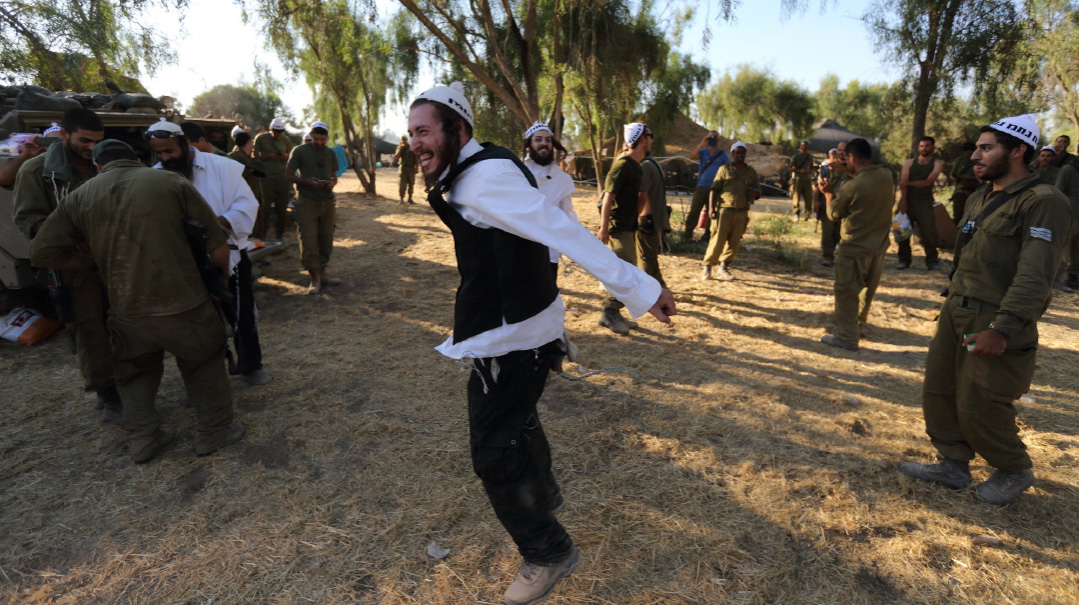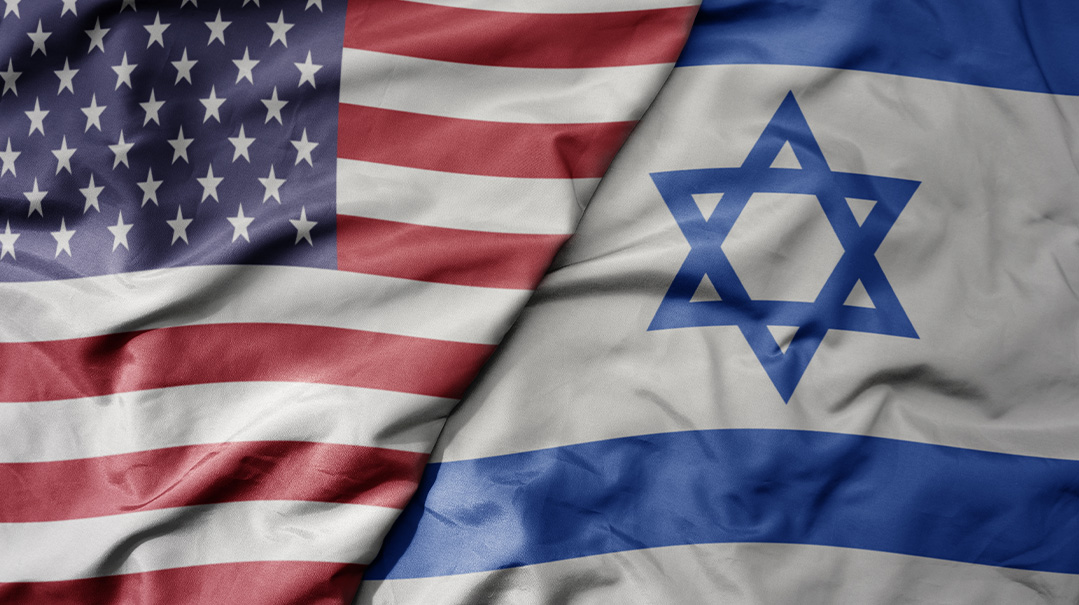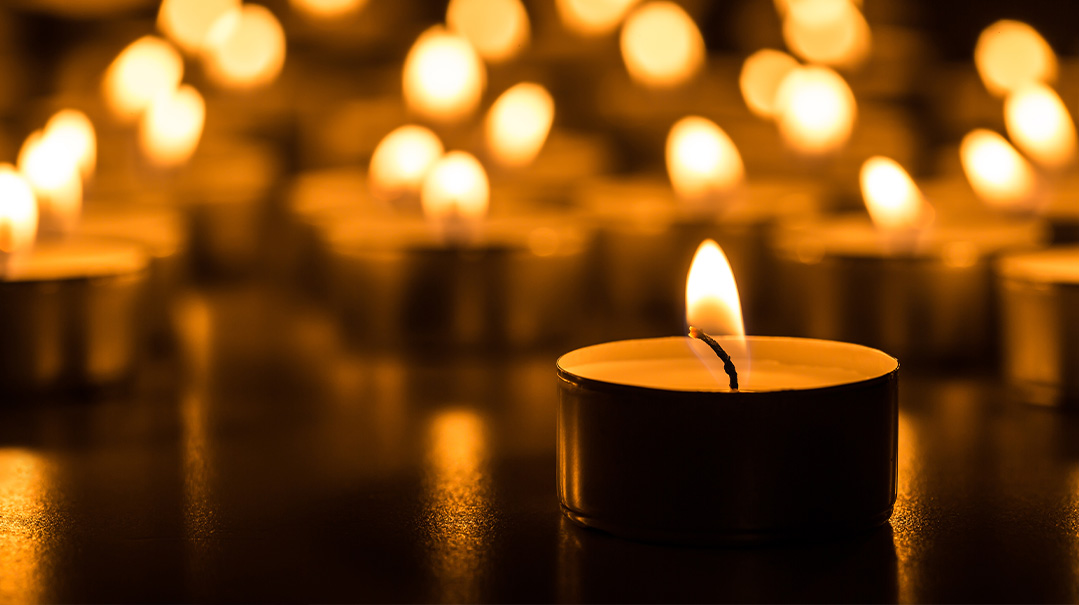A Ray of Light

The power of one-on-one chavrutot from opposite ends of the religious spectrum
Israel’s chareidi community views the new government with a good deal of trepidation. And not without reason. The new finance minister, Avigdor Lieberman, has spoken with relish of “chareidim eating out of garbage cans.”
The question we face, however, is what to do about the new situation. Railing against the government and all who joined it, starting with the new prime minister, Naftali Bennett, has no self-evident benefit. It just makes us look weak and dependent. Perhaps that is why the Israel media kept replaying last week the imprecations and denunciations of chareidi MKs against the new government.
But there is also a ray of light in our new circumstances. With the decline of chareidi political power, there is a decline in the fear of chareidim. Now that we are no longer able to focus our efforts on securing budget allocations for the chareidi sector, it might be the time to direct our energies to reaching out to the broader Israeli society.
One example of what form that outreach might look like was a three-hour event last week at Jerusalem’s Binyanei Ha’umah, at the conclusion of the shloshim of those who perished at Meron. The event, under the auspices of Kesher Yehudi, was designed to give concrete expression to the widespread feeling that the magnitude of the loss of 45 holy Jews at Meron demands a communal response; that HaKadosh Baruch Hu has issued a wake-up call, and wants us to do something concrete.
Individual families of the kedoshim are memorializing their loved ones in various ways — e.g., the writing of a sefer Torah. But the families themselves felt that a collective response is needed as well. From the moment of the tragedy, as Israeli Jews across the spectrum rushed to donate blood, the feeling has grown that unity and ahavas Yisrael is the call of the hour. The very manner of the deaths — crushed by fellow celebrants, albeit completely unintentionally — seemed to make that obvious.
And every speaker at Binyanei Ha’umah made the point about the need for unity and brotherhood: Jerusalem mayor Moshe Leon, who provided the lion’s share of the funding for the event; Rabbi Avigdor Chayut, who lost his young son and a student at Meron and was hospitalized himself; Mrs. Tzila Schneider, the founder of Kesher Yehudi; Rabbanit Yemima Mizrachi, Rebbetzin Kolodetsky, Rabbanit Yaffa Deri, and three mothers of those lost.
Kesher Yehudi, with the encouragement and support of the bereaved families, many of whom were represented in the hall and among the 7,000 viewers via Zoom, used the event to launch a national campaign to enlist new chavrutot in its one-on-one learning programs.
I HAVE WRITTEN in the past of the power of ongoing one-on-one chavrutot from opposite ends of the religious spectrum to forge deep bonds, destroy pre-conceptions, and open up hearts to Torah — and I expect to continue doing so. That power was fully on display in a video of the partners in four chavrutot speaking about their relationships and in a concluding discussion onstage of two study partners, who have already been learning together for seven years.
In the video, a young avreich spoke about the instant chemistry he had found with a soldier just a few years younger than him, and how much they had discovered that they have in common. A young female soldier talked about how her older chavrutah and her family have received her with open arms, and of how much wisdom she has gained from her chavrutah.
Miri, a chareidi study partner in the program, made a point that has always been at the center of Kesher Yehudi’s training for chareidi chavrutot: While the chareidi partner inevitably knows more Torah, he or she gains as much or more from the relationship as his or her secular partner. Such was the case with Miri and Inbal.
“From the day I first ‘met’ Inbal [over the phone], my life has been enriched and I’ve been inspired by her search for truth,” Miri said. “We are best friends, and she is an inseparable part of me.”
Miri and Inbal have been learning for seven years, and during that time, Inbal has become shomer Shabbos. With the start of the Covid lockdowns, they decided to start learning together every day, and have kept that up, without missing a day, for over a year.
Just before Yom Kippur, Inbal received a call from a longtime acquaintance, Meirav. She mentioned to Meirav her chavrutah with Miri, and Meirav immediately expressed an interest in such a chavutah, and asked whether she could join their daily learning. Since then a fourth woman has also joined them. Meirav and Miri met for the first time in person onstage, after nearly nine months of daily learning, and from the warmth of their embrace it was clear what the relationship has meant to both of them.
This morning I spoke to Meirav for over an hour. Her discussion of registering her younger son in a chareidi-run Torani school, a 30-minute bus ride from their house, had to be cut off due to time restraints, and I was eager to hear the rest. I will return to our conversation in the near future, but suffice it to say I was left envious of her constant awareness of Hashem’s presence and that He is guiding her way.
IN NO CONTEXT has ongoing one-on-one learning proved itself so strongly as in the teaching of kallot. In Israel, every kallah under the auspices of the Chief Rabbinate is required to receive some training prior to going to the mikveh. Formerly, that training was usually a perfunctory and off-putting one-time discussion of some technical details of the relevant laws in a group setting.
In 2004, a nonprofit called Lahav was founded with the mission of ensuring that young secular couples’ first up-close encounter with religious Jews is positive and respectful. Lahav started subcontracting the teaching responsibility from as many local religious councils as its budget would allow. Lahav now provides a series of sessions with carefully selected, dedicated kallah teachers, in a private one-on-one setting for about 2,000 kallot a year. At least one meeting is with the couple together.
Most of the secular kallot approach the learning with a certain skepticism that a religious woman or the laws of the Torah have much wisdom to impart to her, and often with fear of “religious coercion.” Yet the subject of how to form a rewarding and lasting marital bond is one on which they are very focused as they approach their weddings, and it is not hard for a skillful, non-pressuring coach to engage them.
Virtually every kallah reports in her written evaluation at that the end of the course that she was astounded to learn how much wisdom the Torah has to offer her. They are all effusive in their praise of their madrichot. A high percentage are committed to implementing the Torah approach to marriage in their lives. And recognition of Torah wisdom in one area inevitably opens them up to learning more about the Torah approach to many other areas of life, and to an ongoing connection to their teachers.
THE OPENNESS OF YOUNG ISRAELIS to learning more about Judaism is a secret from much of the Torah world. Be A Mensch, an organization promoting the simple message, “We are one family — let’s try to learn about and understand one another,” has been working for years with leaders in the Israeli Scouts movements, in which a very high percentage of Israeli youth participate, through weekly discussion groups. The feedback has been so positive that the Scouts have invited Be A Mensch to establish as many such groups with the Scout troops as their manpower will allow.
In addition, the organization has begun working with Israeli high schools. Recently, a group of Be A Mensch mentors visited a high school in Hod Hasharon. After a preliminary sociological description of the chareidi community, the students broke up into small discussion groups with individual mentors from Be A Mensch.
While some students stuck with the sociological aspects of the chareidi community, I was surprised to hear from a neighbor who heads the high school project that few of the questions were about army service or other such hot-button topics. Rather, one group wanted to know why my neighbor believes in Hashem. He replied that there are many answers, but for him his feeling of closeness to Hashem is strongest when he is swimming in the discussions in various batei medrash spanning thousands of years on a single amud of Gemara. He proceeded to show them how the discussion proceeds from the Tannaim to the Amoraim to Rashi and the Baalei Tosafos a millennium later. Then he invited them to join him in learning the day’s daf yomi.
That same question, in a slightly different form — Can you prove to me that Elokim exists? — was the subject of another discussion group.
If those are the questions being asked by high school students in one of Israel’s most secular areas, then the potential to enter into deep discussions around the Torah is unlimited.
Let’s get going in reaching out to secular learning partners, and stop moping about a political situation beyond our control.
Originally featured in Mishpacha, Issue 865. Yonoson Rosenblum may be contacted directly at rosenblum@mishpacha.com
Oops! We could not locate your form.






